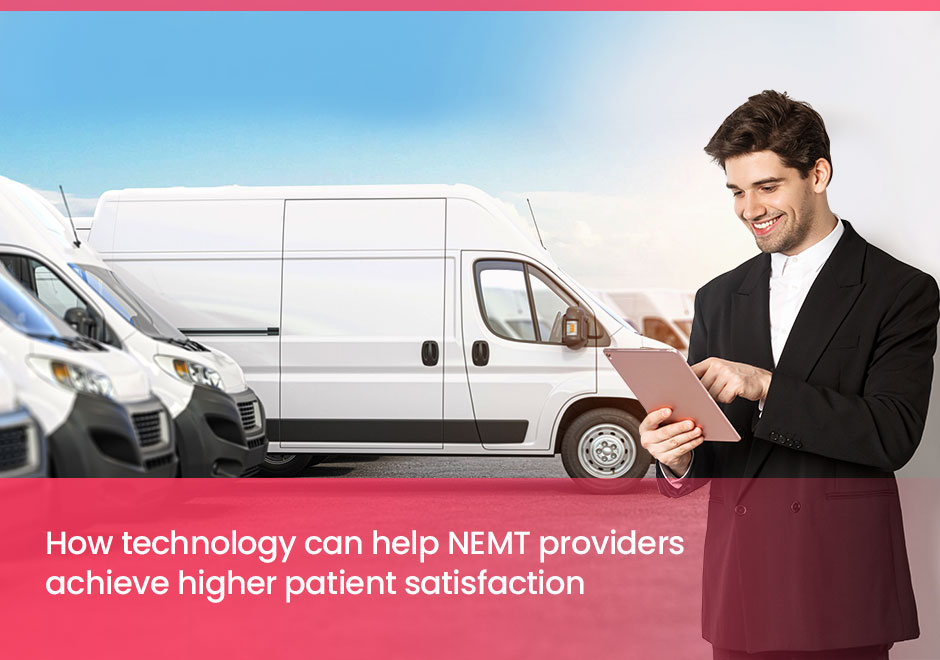New At Safr Care
How Technology Can Help NEMT Providers Achieve Higher Patient Satisfaction

The non-emergency medical transportation (NEMT) industry focuses on the transportation of patients that require medical attention but do not require immediate, life-saving care. Ensuring high levels of patient satisfaction is critical for providing businesses, as it can lead to increased customer loyalty and positive word-of-mouth advertising. There are several technological resources that can be used to achieve higher patient satisfaction in the NEMT industry:
Online booking and scheduling systems: Implementing an online booking and scheduling system allows patients to easily schedule their transportation appointments at their convenience, rather than having to call during business hours or wait in line. This can save patients time and reduce frustration. In addition, these systems often allow patients to view their appointment details and receive confirmation emails or text messages, which can reduce the likelihood of missed or incorrect appointments. They also allow NEMT businesses to manage their schedules more efficiently and reduce the risk of double-booking or overbooking. Some platforms may even allow patients to cancel or reschedule their appointments online, which can further improve the convenience and flexibility of the scheduling process.
GPS tracking: Implementing GPS tracking technology in NEMT vehicles allows patients to track the location and estimated arrival time of their transportation. This can give patients peace of mind and reduce anxiety about the pickup process. It can allow NEMT businesses to optimize routes and reduce wait times for patients. For example, if a patient's pickup location is significantly out of the way of the business's normal routes, the business may be able to adjust the route to minimize the patient's wait time. GPS tracking can also provide NEMT businesses with valuable data on traffic patterns and travel times, which can be used to further improve the efficiency of operations.
In-vehicle entertainment: Providing in-vehicle entertainment options, such as televisions or tablets, can help make the transportation experience more enjoyable for patients. This is especially useful for longer trips or for patients who may be confined to the vehicle for extended periods of time due to mobility issues. In-vehicle entertainment can help reduce boredom and make the time pass more quickly for patients. It can also provide patients with an opportunity to engage in activities or watch content that they enjoy, which can help improve their overall mood and satisfaction.
Mobile apps: Developing a mobile app for patients can provide them with a convenient way to access information about their transportation appointments, track the status of their rides, and communicate with NEMT staff. These apps can also allow NEMT businesses to send notifications or updates to patients, such as changes to their pickup times or the arrival of their transportation. This can help reduce the risk of missed or incorrect appointments and improve communication between patients and NEMT staff. Mobile apps can also provide patients with the ability to rate and review their transportation experiences, which can be valuable feedback for NEMT businesses looking to improve their services.
Electronic medical records (EMR) systems: Implementing an EMR system allows NEMT staff to easily access and update patient medical information, such as allergies or medication lists. This can help ensure that patients receive proper care during their transportation and reduce the risks of uninformed providers. EMR systems can also allow NEMT businesses to track patient care and treatment, which can be useful for service quality improvement purposes. For example, if a NEMT business notices that a particular patient has epilepsy, the provider may be trained to address an incident, or be able to take additional precautions to prevent future reactions.
Vehicle modifications: NEMT businesses can make modifications to their vehicles to improve patient comfort and accessibility. For example, adding ramps or lifts for wheelchair access, installing adjustable seating or bedding, or providing amenities such as blankets or pillows, can all help make the transportation experience more comfortable for patients.
In conclusion, there are several technological resources and procedures that NEMT companies can use to achieve higher patient satisfaction. Implementing these technologies and services can ensure that businesses will provide high quality service to their patients, which in turn leads to higher customer satisfaction ratings.

